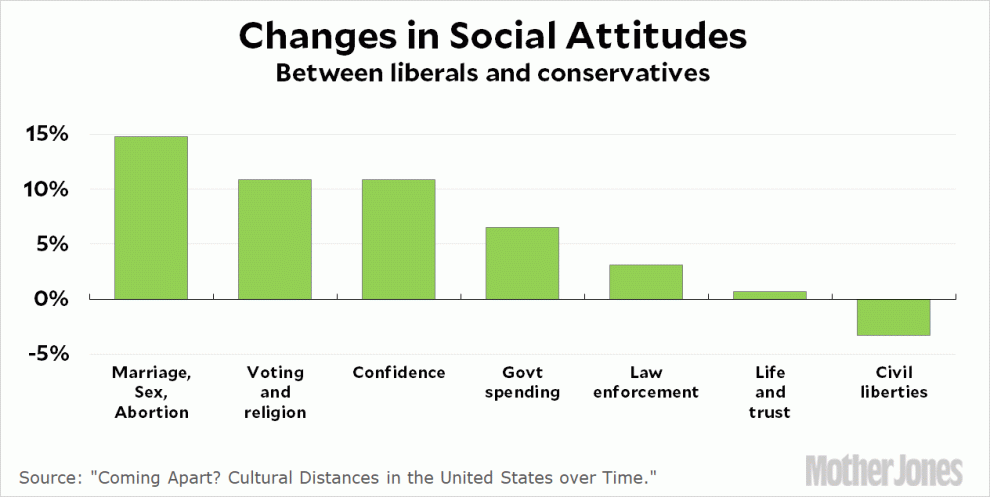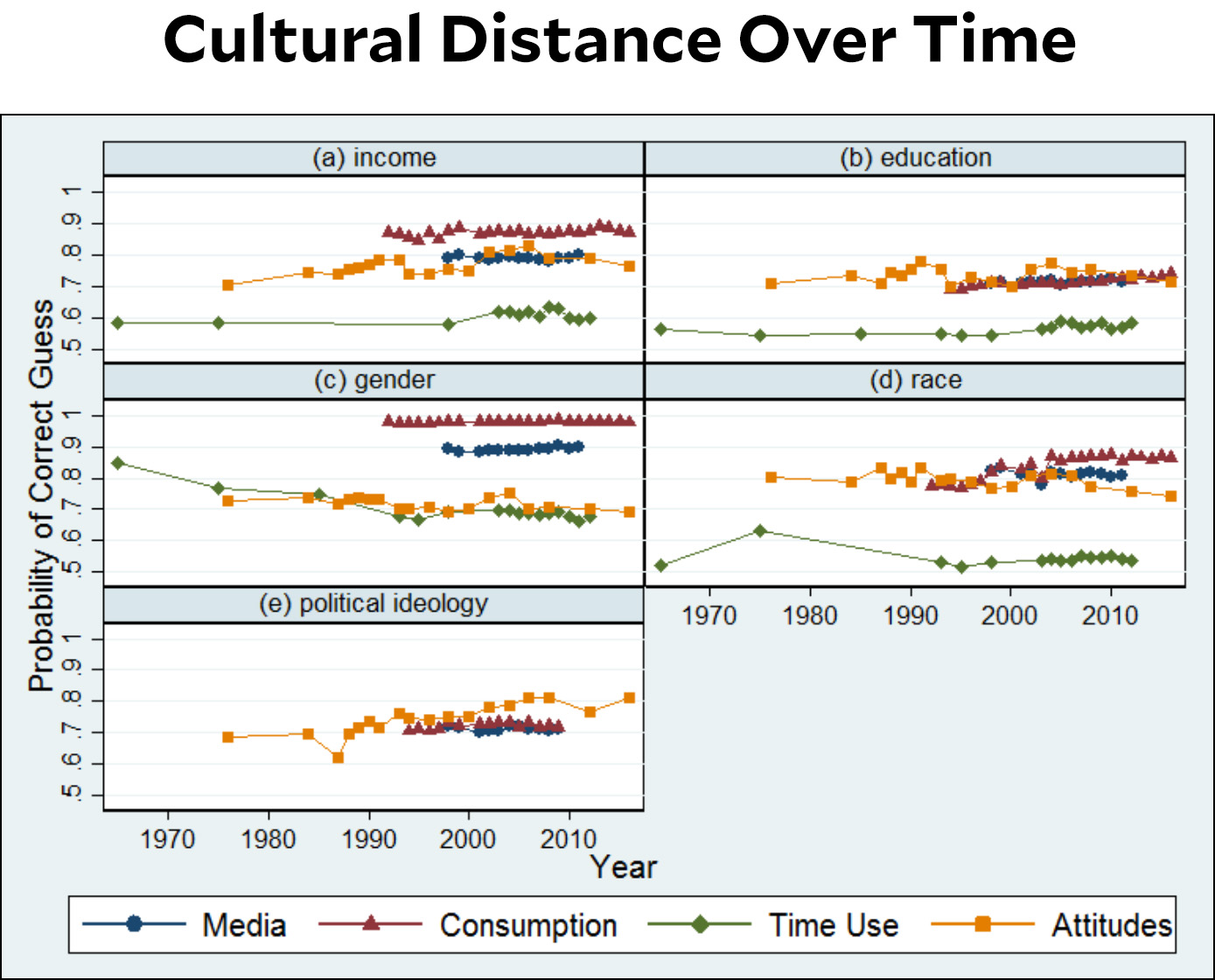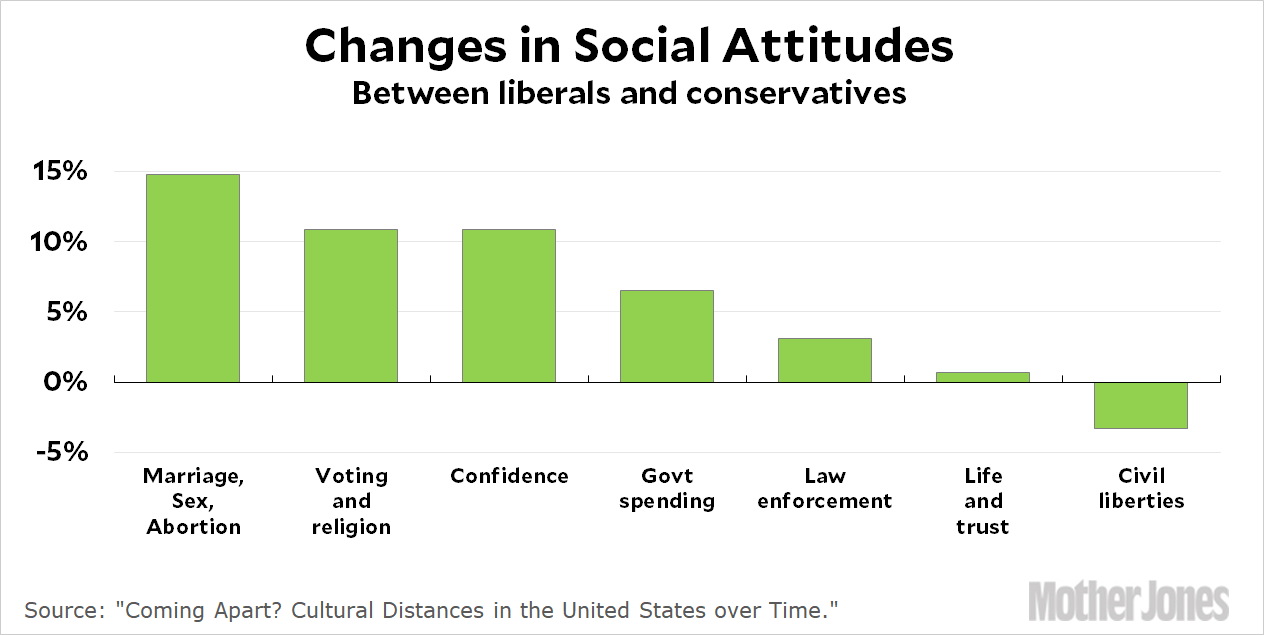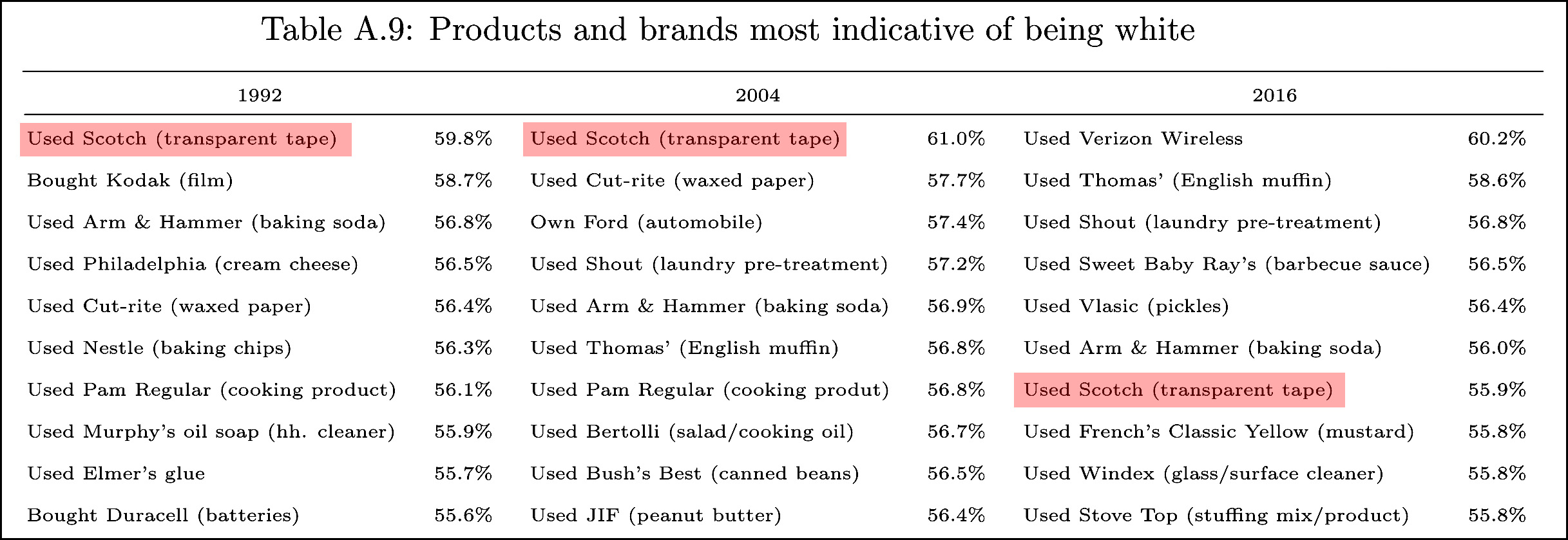
Tyler Cowen linked yesterday to a new paper called “Coming Apart? Cultural Distances in the United States over Time.” The object of the paper is to see if people of different races, genders, and incomes have become more culturally distant from each other over the past few decades.
The authors use a simple metric for this: how easy is it to predict who you are? For example, if I know your five favorite TV shows, how well does that predict whether you’re male or black or high income? If different groups watched similar shows in the past but now they all watch different shows, this kind of prediction becomes more accurate because we’re moving apart in our tastes. But it turns out we aren’t. The basic conclusion of the paper is that nothing much has happened:

For the most part, these lines are pretty flat. For example, take a look at the red line in the top left panel. It represents the consumption pattern of rich vs. poor, and it’s around 0.9. This means that the rich and poor are very different in the products they buy, but also that they’ve always been very different. The size of the difference, or “cultural distance,” is about the same as it’s always been.
There are a few lines that have changed modestly over time, but the biggest changes have come down in the details. Here are the specific attitudes that have changed the most over the past few decades:
Between high and low income:
- Views on law enforcement have diverged by 9 points.
Between men and women:
- Views on life and trust have diverged by 9 points
Between whites and non-whites:
- Views on law enforcement have diverged by 9 points
- Views on politics and religion have diverged by 12 points
- Views on government spending have diverged by 18 points
- Views on life and trust have diverged by 16 points
The biggest divergence, by far, has been between whites and non-whites. Not only have they diverged by large amounts, but they’ve diverged in four categories. The races in America have become noticeably more culturally distant from each other since 1976.
Finally, here’s a chart that shows the divergence in social attitudes between liberals and conservatives:

The biggest changes have been in gender issues, party affiliation, religion, and confidence in institutions. This isn’t surprising, nor is the fact that the divergences have been relatively large, since ideology is self-selected. The increasing political polarization of Americans has been a topic of endless discussion over the past decade, and it’s a real thing.
Finally, on a less serious side, here are the products that most distinguish whether or not you’re white:

A question for my black and Hispanic friends: what’s up with the scotch tape? Why is that a white thing? What do you use when you need to tape two pieces of paper together?















